THE NEW FRONTIER COUNTRY DRIVEN BY RESOURCE-BASED ECONOMY
Mongolia currently ranks among the top 10 resource-rich nations in the world. Industrial production mainly consists of coal, copper, gold, molybdenum, fluorspar, uranium, tin, tungsten, and iron ore. According to the NSO, the mining and quarrying sector is among the most important contributors to GDP (16.4% of 2011E GDP), second only to the net taxes on products division (17.7% of 2011E GDP). NSO estimated that 8.7 increases in mining and quarrying products such as crude oil, coal and iron ore in 2011. And it is this base that is fueling the impressive economic growth in Mongolia.
Mongolia’s economy recovered to 6.4% GDP growth in 2010 from -1.3% during world financial crisis in 2009. According to preliminary estimates from National Statistics Office of Mongolia (NSO), the Mongolian economy finished at a furious pace, with real GDP growing by 17.3% in 2011. This marked the first time Mongolian growth surpassed that of its neighbor – China, the world’s fastest-growing major economy. In fact, it came close to doubling the 2011 Chinese real GDP growth of 9.2 percent.
Mongolia currently ranks among the top 10 resource-rich nations in the world. Industrial production mainly consists of coal, copper, gold, molybdenum, fluorspar, uranium, tin, tungsten, and iron ore. According to the NSO, the mining and quarrying sector is among the most important contributors to GDP (16.4% of 2011E GDP), second only to the net taxes on products division (17.7% of 2011E GDP). NSO estimated that 8.7 increases in mining and quarrying products such as crude oil, coal and iron ore in 2011. And it is this base that is fueling the impressive economic growth in Mongolia.
Mongolia’s economy recovered to 6.4% GDP growth in 2010 from -1.3% during world financial crisis in 2009. According to preliminary estimates from National Statistics Office of Mongolia (NSO), the Mongolian economy finished at a furious pace, with real GDP growing by 17.3% in 2011. This marked the first time Mongolian growth surpassed that of its neighbor – China, the world’s fastest-growing major economy. In fact, it came close to doubling the 2011 Chinese real GDP growth of 9.2 percent.
Factors Driving Economic Growth
Pro- business environment
Since moving from a communist state to a democracy in the early 1990s, Mongolia has been moving toward fully embracing a free-market economy. The Mongolian government facilitates a pro-business environment through:
1) Regulations that provide security to anyone interested in operating a business – it takes less time to start business in Mongolia than the world average
2) Low tax rates – a flat 10% for individual income tax and up to 25% corporate
3) Foreign direct investment and trade are encouraged by law and there are very few limitations regarding the flow of capital across the border. In 2009, the weight average of tariff rate for all products was 5.1%.
According to the 2010/2011 Fraser Institute Annual Survey, Mongolia ranks 54th out of 79 districts in the world regarding the government mining policy index. This serves as a report card by which to grade governments on how attractive their policies are from the point of view of an exploration manager. Mongolia’s ranking is higher than Russia (69/79), China (62/79), and is the second highest in Asia. Rather impressive for an emerging market and major ongoing draw on the existing energy supply.
Resource demand from China
According to the Coal Industry Association of Mongolia, almost 100% of Mongolian coal and copper exports went to China, in 2009. Consider the case of coking coal. During Q1-Q3 2011, China imported 30.38 Million tons of coking coal. Imports from Mongolia increased from 30% to 45% in 2010, marking the first time that Mongolia supplanted Australia as China’s top coking coal supplier.
There are three factors affecting such change:
1) Competitive price for Mongolia coking coal makes it favored in China – During Q1-Q3 2011, the Average sale price (ASP) for imported coking coal from Mongolia was $75.5/ton vs. Australian coking coal’s ASP of $221.4 /ton.
2) Severe flooding – In 2011, Australian coking coal exports fell as the result of transportation disruption in Queensland, its majority coking coal supply source on a global seaborne basis.
3) Proximity to China – Mongolian coal has less delivery time and cheaper transportation cost compared to long distance sea freight rate for Australia competitors.
Internal economic growth has resulted in a dramatic increase in power consumption and forecast for increasing need.
Rising Domestic Power Demand in Mongolia
According to Energy international LLC, electricity demand is expected to increase from 711MW in 2011 to 1375MW in 2015. The two major catalysts are behind this anticipated near-doubling in power requirements:
1) The rapidly developing mining-based economy. Tremendous resource attracts more and more foreign companies to swarm into Mongolia, with ambitious plans to develop the world’s largest copper deposit and one of the largest undeveloped coking deposits, as well as many other large-scale projects.
2) Mongolia is experiencing an accelerating urbanization process as those traditionally living in remote regions continue to pour into population centers. Nearly half of the people live in urban areas, particularly the capital, Ulaanbaatar, with a population in excess of one million. Semi-nomadic life still predominates in the countryside, but settled agricultural communities are becoming more common.
Current Power Situation
Coal-fired power plants still provide the majority of power generation in Mongolia. According to a recent Asian Development Bank report, there are seven main coal-fired power plants in Mongolia with total installed capacity of 856MW. Due to aged, deteriorated, and unreliable equipment, the actual available power capacity is significantly lower. The Ulaanbaatar TES-4 CHP Power is the largest power plant in Mongolia, with a capacity of 580MW. The first unit was commissioned in 1983 and the last in 1991, many updated and repairs have been made in recent years. The second largest power plant TES-3 CHP Power (capacity of 136MW) was installed in 1968 and the original retirement period were 2011. However, due to the lack of a replacement heating resource, it has to be kept in operation.
According to an agreement between the Mongolia and Russia, it should be possible for Mongolia to import 120-160MW electricity from Russia at any time, in order to cover the peak load and regulate the grid frequency. But the import is expected to be stagnant due to the insufficient throughput capacity of power transmission lines linking the region with Mongolia, as well as the high rate for imported electricity of $.08 /kWh.
Aging infrastructure and barriers to power import have Mongolia facing critical and increasing energy deficits.
Mongolia is perfectly capable of developing new energy sources through exploitation of their own vast resources and this would release that nation from reliance on costly and unstable imports from Russia.
The Case for a New Thermal Coal Power Plant
The figures cited above with respect to coking coal are equally as impressive in terms of thermal coal, which is used in the generation of electricity. Its demand for power necessitates that Mongolia develop new thermal coal power plants. Its proximity to China, coupled with Chinese demand, also creates an opportunity for Mongolia to export electricity rather than raw materials – a far more lucrative proposition. A far more geo-politically expedient move as well, considering that Mongolia is currently reliant on foreign sources to power its own domestic needs when it has the internal capacity to be energy independent…even with its rapidly increasing rate of consumption.
It is true that Mongolia is actively developing alternative energy sources. Ulaanbaatar recently approved plans to set up the country’s first commercial wind farm with an initial installed capacity of 50 MW, which is expected to generate 5% of Mongolia’s electricity. Approximately 2 percent of the country’s power needs are currently met with household solar systems and small hydro-electricity projects. Further, Mongolia plans to have its first nuclear power plant by 2020.
However, the development of a new coal-fired power plant should still be a priority for Mongolia in the next decade in order to ensure the dramatic shortfalls forecasted can be offset. Economically, this is clearly the right choice as, in terms of levelized cost of electricity (LCOE) – which refers to present value of the initial investment and operating costs for the whole life – a coal-fired power plant is expected to have the lowest cost ($74/mWh) compared with other forms of energy (hydro power, nuclear, wind power and solar photovoltaic, etc.).
Furthermore, despite negative sentiment toward coal and other fossil fuels as pollutants, a new thermal coal power plant would actually contribute to a dramatic overall reduction in harmful emissions in Mongolia, with particular reference to Ulaanbaatar. According to the World Health Organization, the Mongolian capital ranks as the second most polluted city in the world, with 279 micrograms of particulates per cubic meter. For perspective, the WHO considers anything over 20 micrograms to be dangerous. Los Angeles, California averages just 25. The two existing, out-of-date coal-fired power plants described above, operate within city limits, dispensing an inordinately and unnecessarily high level of emissions which tends to hover over Ulaanbaatar’s million plus residents. During Mongolia’s harsh winters, when the temperature plunges below -40C, people burn raw coal or other materials directly in stoves in order to heat their homes.
The modern technology available drastically improves efficiency, meaning a corresponding reduction of harmful emissions. Mongolia has massive coal deposits situated hundreds of kilometers from any significant population centers, which would enable a new project to be located in a remote region. As Mongolia continues to embrace new forms of power to fuel its remarkable growth, it is important to recognize the immediacy of the need as well as the existing state of production. The people of Mongolia not only face deficits and brown-outs, they live with some of the filthiest, most dangerously polluted air on Earth. They deserve better.
Mongolia as Net Power Exporter
China Electricity Industry – Balanced Supply / Demand With Imbalanced Distribution
From 2007-2011, the compound annual growth rate (CAGR) for the total electricity consumption in China was 9.7%, in line with the GDP growth rate. According to the China Electricity Council, Chinese power output is expected to reach 5000 Billion Kwh in 2012, while power generated from coal may still make up 81% of all power output. For the past five years, China’s electricity demand was fulfilled by its power output. However, in summer of 2011, eastern China suffered from the largest electricity deficit since 2004, with a maximum deficit 11.6 Million Kwh. More electricity transmission lines are needed to satisfy China imbalanced energy need, which results from an imbalance of regional economy development.
China’s ambitious plan to develop its electricity grid to facilitate economy is well underway. According to the Chinese Electricity Council’s investment plan, by 2015, a total of 2.55 trillion RMB (~390 billion USD) will be spent on grid construction. Aiming for at least three west-east and three north-south long-distance lines across the country, the goal is to build up an ultra-high-voltage network to transmit the electricity generated from coal-rich regions in north and west China to developed regions in east and south China.
Export to China – An Enormous Opportunity for Mongolia’s Power Industry
Due to high and imbalanced electricity demand, mainland China imports vast amounts of electricity and sources of power from its neighbors. According to China Customs, electricity import reached 7503 million kWh from Jan – Nov 2011. Currently, Russia is the third largest electricity supplier to China with the three north-east provinces with intensive heavy industries in China as primary beneficiaries.
With significant enough installed capacity in a new coal fired power plant, Mongolia would be in a position to export electricity to China via existing Ultra High Voltage lines in its Eastern Energy System, which is connected with Erlianthot city, the largest port of China to Mongolia. Erlianhot city is in the north of Inner Mongolia province in China and connected to the Chinese national electricity grid, which would distribute the imported electricity to the north east of china.
Conclusion
Mongolia is a vast country with largely untapped resources and unrealized potential. The transformation it has undergone in the past 20 years is nothing short of remarkable and, with upcoming elections, it is important for the people of that country to recognize and embrace the possibilities. Foreign investors are becoming increasingly comfortable with the political landscape, with a multitude of new and ongoing projects consistently making headlines. The time is right for an ambitious plan that will elevate the standard of living for all citizens and enable them to be fully in charge of their own destiny. Embracing the development of their own electricity supply via a new coal-fired power plant facility would enable Mongolia to maintain a furious pace of growth and assume a much more prominent role as a political and economic force within the region.
Source:mining.com






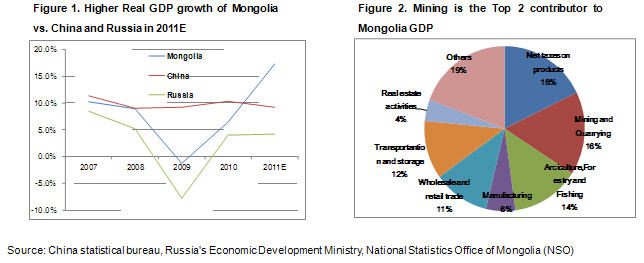
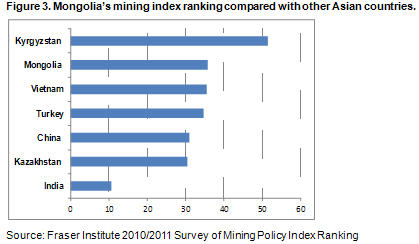
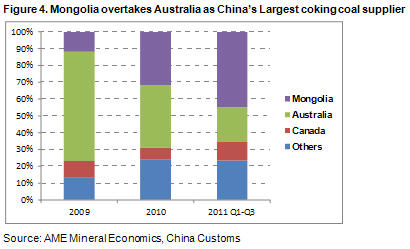
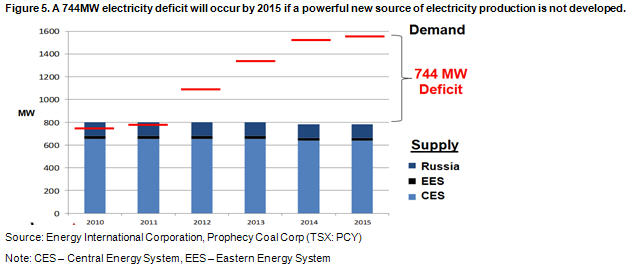
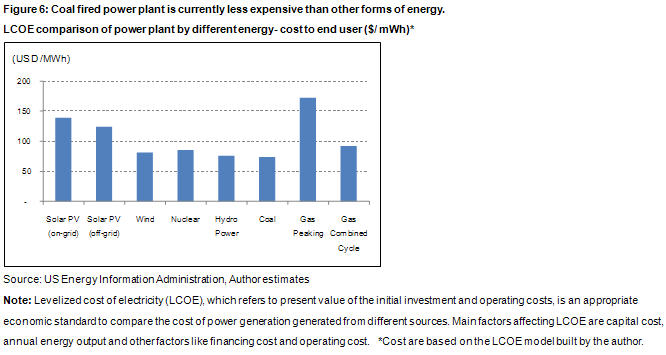
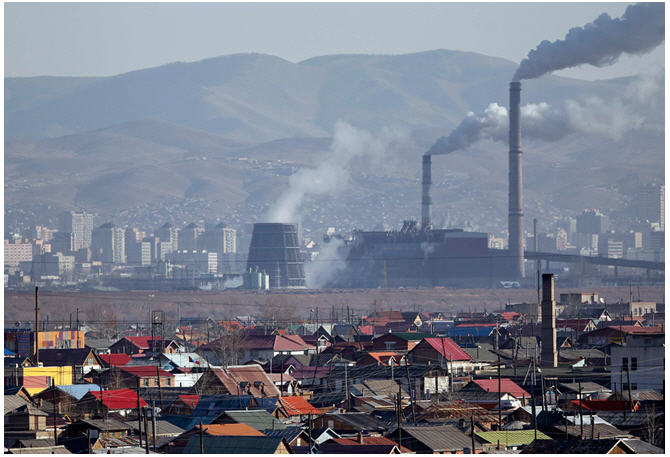
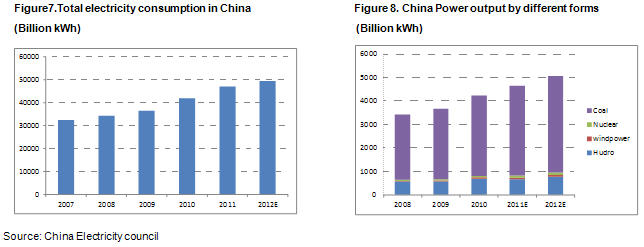
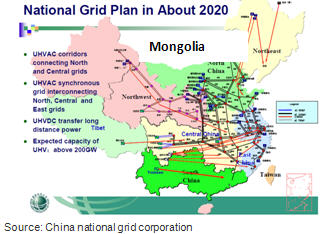
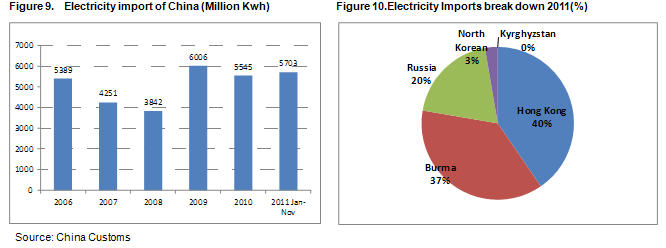
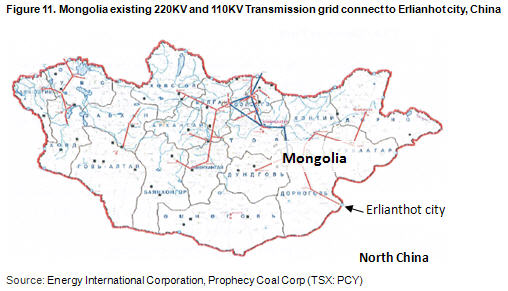

0 comments:
Post a Comment